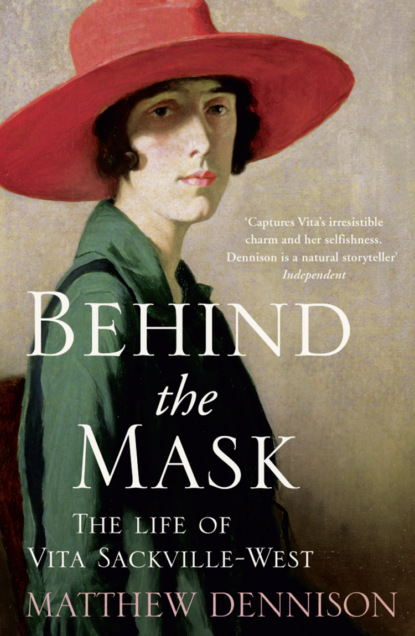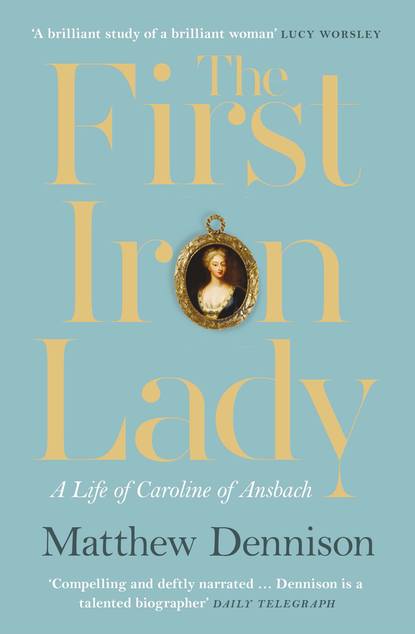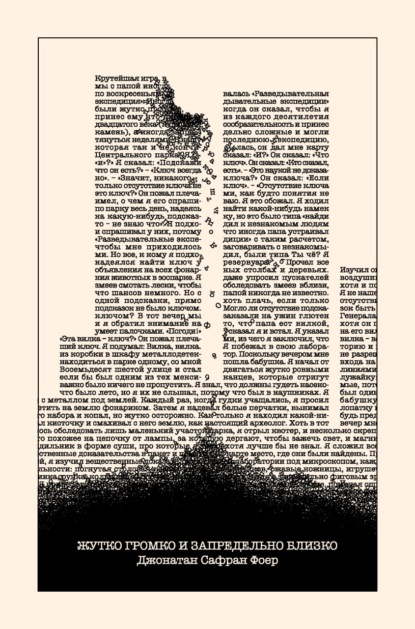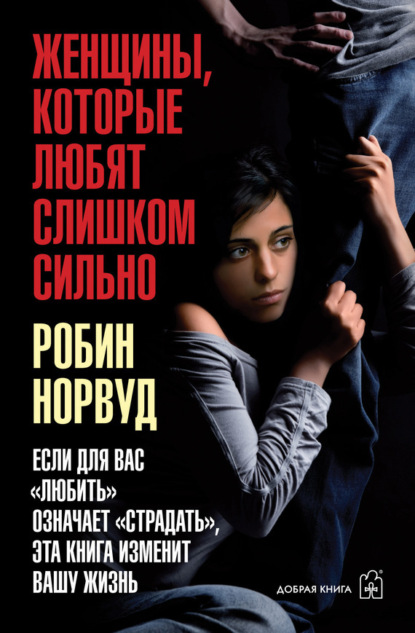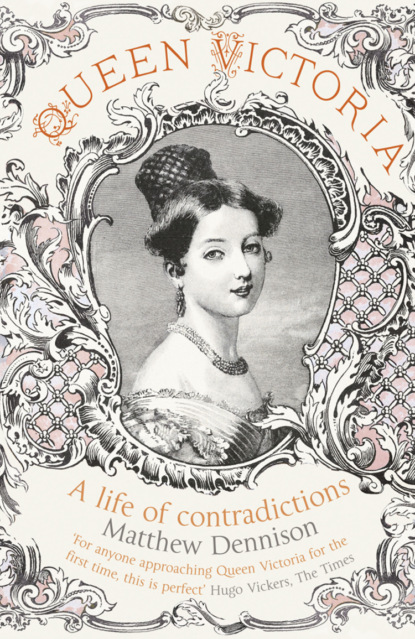
Текст
отзывы: 0 | рейтинг: 0
Queen Victoria: A Life of Contradictions
Жанр:
Биографии и мемуары
Язык:
Английский
Тип:
Текст
Год издания:
2019
Полная версия
Полная версия
1
Queen Victoria: A Life of Contradictions
Matthew Dennison
A fresh, witty, accessible life of Queen Victoria. Not since Lytton Strachey has the irony, contradictions and influence of this Queen been treated with such flourish or biographical insight.'Queen Victoria had a very complicated and psychologically fascinating personality and only a very talented biographer could get to the key of her character. Fortunately in Matthew Dennison's pithy, well-researched, beautifully written and very accessible book, she has found one' Andrew RobertsQueen Victoria is Britain’s queen of contradictions. In her combination of deep sentimentality and bombast; cultural imperialism and imperial compassion; fear of intellectualism and excitement at technology; romanticism and prudishness, she became a spirit of the age to which she gave her name.Victoria embraced photography, railway travel and modern art; she resisted compulsory education for the working classes, recommended for a leading women’s rights campaigner ‘a good whipping’ and detested smoking. She may or may not have been amused.Meanwhile she reinvented the monarchy and wrestled with personal reinvention. She lived in the shadow of her mother and then under the tutelage of her husband; finally she embraced self-reliance during her long widowhood. Fresh, witty and accessible, Queen Victoria is a compelling assessment of Victoria’s mercurial character and impact, written with the irony, flourish and insight that this Queen and her rule so richly deserve.
For Gráinne and Aeneas, with all love
‘I could tell you my adventures – beginning from this morning,’ said Alice a little timidly: ‘but it’s no use going back to yesterday, because I was a different person then.’
Lewis Carroll, Alice’s Adventures in Wonderland, 1865
‘Elizabeth [I] was a great Queen but a bad woman; and even in her royal capacity she erred sometimes; she had a very great idea of her prerogative and was more arbitrary even than her tyrannical father.’
Princess Victoria, c.1834
CONTENTS
TITLE PAGE (#u76b188f5-8d64-5bfd-9308-c12a75628877)
DEDICATION (#uffd34307-6029-55cf-8f77-ab46719d8baf)
EPIGRAPH (#uaef44f09-bb72-58ea-962e-cb8b7b61fea3)
QUEEN VICTORIA’S FAMILY TREE: A SIMPLIFIED VERSION (#u55ae3a87-5407-56f4-a3d5-72d0e514c0c3)
LIST OF ILLUSTRATIONS (#ue835e41e-5c01-5ccb-ac16-a566f2f3e727)
INTRODUCTION (#u41f7438f-0e14-5523-ad7e-2a2fbc4cc0e5)
CHAPTER 1: ‘Pocket Hercules’ (#udfb28a57-3a2a-596b-8ca0-7bf7ffdc1146)
CHAPTER 2: ‘Fresh and innocent as the flowers in her own garden’ (#uc217cd59-9673-5db6-aad9-405a2fcb52b2)
CHAPTER 3: ‘Constant amusements, flattery, excitements and mere politics’ (#udd413cb3-2c1d-5bc8-9685-54a11fa9776b)
CHAPTER 4: ‘Every quality that could be desired to render me perfectly happy’ (#u09ecb6cd-642a-5a2d-b238-dcd8cff32b4d)
CHAPTER 5: ‘The cares of Royalty pressed comparatively lightly’ (#u4c32d3ef-6320-510f-97be-f7991fc7ac06)
CHAPTER 6: ‘The pain of parting’ (#u20588e5d-05f3-575f-94d7-02778f794217)
CHAPTER 7: ‘Unavailing regrets’ (#u75b489f7-73bc-5985-84c3-5991e3f522ed)
CHAPTER 8: ‘A Highland Widow’ (#uddf68462-2b35-5ad4-90c2-7ba1655ce911)
CHAPTER 9: ‘Wisest counsellors’ (#u5edf639a-0664-5f28-a5b8-1046008be493)
CHAPTER 10: ‘Mother of many nations’ (#u576df825-e169-574b-b0c4-423b9c5ba1d0)
CHAPTER 11: ‘All that magnificence’ (#u84b12389-47d9-574f-8456-1c2a452f71ef)
PICTURE SECTION (#u1f3e1512-39ce-5e25-b9eb-3c700e4cff78)
NOTES (#u325148ac-9ba7-53a0-a168-60132f494790)
BIBLIOGRAPHY (#u629179b2-34c7-536b-8b3c-bc408f951751)
INDEX (#uef3a5a3f-8f73-52c3-8f2c-c22153798363)
ALSO BY MATTHEW DENNISON (#u42eb13ee-af29-540e-ab71-6400b2ac51ba)
COPYRIGHT (#u689f478f-c30e-5ad7-ab2f-31ce20e6ac32)
ABOUT THE PUBLISHER (#uc58fefd4-daac-5d67-9343-85b02bbb9d17)
LIST OF ILLUSTRATIONS
1. Victoria, Duchess of Kent with Princess Victoria by Sir William Beechey, 1821 (The Royal Collection © 2011 Her Majesty Queen Elizabeth II / The Bridgeman Art Library)
2. Victoria Regina by Henry Tanworth Wells, 1887 (The Royal Collection © 2011 Her Majesty Queen Elizabeth II / The Bridgeman Art Library)
3. Queen Victoria by Sir Francis Grant, 1843 (The Crown Estate / The Bridgeman Art Library)
4. Queen Victoria by Alfred Edward Chalon, 1838 (Scottish National Portrait Gallery, Edinburgh, Scotland / The Bridgeman Art Library)
5. Lord Melbourne with Queen Victoria’s dog, Islay, by Queen Victoria (The Royal Collection © 2011 Her Majesty Queen Elizabeth II / The Bridgeman Art Library)
6. Prince Albert by Emil Wolff, 1844 (The Royal Collection © 2011 Her Majesty Queen Elizabeth II / The Bridgeman Art Library)
7. Queen Victoria and Prince Albert at the Bal Costumé of 12 May 1842 by Sir Edwin Landseer, 1842–6 (The Royal Collection © 2011 Her Majesty Queen Elizabeth II / The Bridgeman Art Library)
8. To the Queen’s Private Apartments, English School, 19th century (The Royal Collection © 2011 Her Majesty Queen Elizabeth II / The Bridgeman Art Library)
9. Queen Victoria with her Four Eldest Children by Franz Xaver Winterhalter, 1845 (The Royal Collection © 2011 Her Majesty Queen Elizabeth II / The Bridgeman Art Library)
10. Badge of the Order of Victoria and Albert by Tommaso Saulini, c.1863 (The Royal Collection © 2011 Her Majesty Queen Elizabeth II / The Bridgeman Art Library)
11. Queen Victoria, Alice and Louise with portrait of Albert, 1863 (© Hulton Royals Collection / Getty Images)
12. Her Majesty at Osborne in 1866 by Sir Edwin Landseer, 1867 (The Royal Collection © 2011 Her Majesty Queen Elizabeth II / The Bridgeman Art Library)
13. Queen Victoria with a spinning wheel, 1875 (© Hulton Royals Collection / Getty Images)
14.The Family of Queen Victoria in 1887 by Laurits Regner Tuxen, 1887 (The Royal Collection © 2011 Her Majesty Queen Elizabeth II / The Bridgeman Art Library)
15. Queen Victoria by Jean Joseph Benjamin-Constant, 1899 (The Royal Collection © 2011 Her Majesty Queen Elizabeth II / The Bridgeman Art Library)
Introduction
ON THE EVE of Queen Victoria’s coronation, in June 1838, Charles Greville committed to his diary a memorable description of the capital. ‘It is as if the population had been on a sudden quintupled; the uproar, the confusion, the crowd, the noise, are indescribable. Horsemen, footmen, carriages squeezed, jammed, intermingled … not a mob here and there but the town all mob … the park one vast encampment … and still the roads are covered, the railroads loaded with arriving multitudes.’
Remove the horses and Greville’s picture is recognisable to the modern reader familiar with London in the grip of royal fervour. The Times attempted to unravel the attitude of Greville’s ‘mob’: ‘They thought of [Victoria] not as an individual to be loved with headlong zeal or played upon by corrupt adulation … they regarded her as in herself an institution.’
Victoria’s success over the course of a long reign was to unite, to the benefit of both, the individual and the institution. In a very personal sense, the monarchy became ‘Victorian’: in the minds of many of Victoria’s subjects, the throne acquired what they understood as her own virtues. This symbiosis invested the British Crown with a tangibly human aspect at the same time as exalting Victoria herself as an archetype and exemplar of all that was laudable in a woman and a ruler. It was partly good fortune, partly born of a sympathetic popular mindset shaped by culture and economics. As we shall see, Victoria’s behaviour did not consistently merit approbation, which, throughout her final decades and beyond, came close to idolatry.
Hers did not begin as a cult of personality: that happened later. From infancy those closest to her schooled her in a course of exemplary behaviour: her mother, her governess, her canny Uncle Leopold. A backlash against the burlesque and buffoonery of her immediate predecessors, their model of rectitude encouraged a suppression of self in the interests of a tarnished Crown. Outwardly, Victoria’s monarchy came to be characterised by probity, continence and earnestness, all ‘Victorianisms’ derided by posterity. Yet this mandate of good behaviour provided an imprimatur of some resilience for a throne that, in political terms, continued to lose ground to an increasingly elected and representative Parliament. If Victoria did not always keep faith with that mandate, she mostly avoided publishing her transgressions. Returning to the fray at the time of her death, The Times was able to assert unblushingly that, if the monarchy stood ‘broad-based upon the people’s will … we owe these results, to a degree which is hardly possible to over-estimate, to the womanly sweetness, the gentle sagacity, the utter disinteredness, and the unassailable rectitude of the Queen’.
Readers of the following account of Victoria’s life will discover that her sweetness, sagacity, disinteredness and rectitude were all variable qualities: she was a woman of dizzying contradictions and myriad inconsistencies, but deeply etched in her makeup was a towering wilfulness that intermittently rendered her foolish, selfish, blinkered, exasperating and apparently self-destructive. In virtually the same breath she was capable of immense charm, humility, compassion, candour, perspicacity, generosity, intrepidity and understanding. ‘How sadly deficient I am, and how over-sensitive and irritable, and how uncontrollable my temper is when annoyed and hurt,’ she confessed to her journal on New Year’s Day 1881.
She was unflinchingly honest throughout her life, especially with herself. Repeatedly that honesty failed to equate with accurate self-knowledge. A surer estimate than that of The Times belongs to her last prime minister, Lord Salisbury, who commended her ‘inflexible conscience’ and ‘unflagging industry’. Neither predisposition shaped her conduct life long.
She did not read Walter Bagehot’s The English Constitution, published in 1867. Even without that guidance – staple reading for her successors – she insisted to ministers and prime ministers, clergymen, generals, foreign statesmen and rulers, as well as her own family, on her rights to be consulted, to encourage and to warn, and did so with vehemence and some success. A reluctant showman, she is unlikely to have embraced Bagehot’s definition of public life as akin to theatre: ‘the climax of the play is the Queen’.
By the end of her reign, however, she had convincingly overturned his qualification that ‘nobody supposes that their house is like the court; their life like her life; her orders like their orders’. Not least among Victoria’s achievements was her calculated presentation of herself as an acme of ordinariness. Even as she exulted in the riches and grandeur of empire, she appeared Britain’s first middle-class monarch, her way of life recognisable and, for the most part, comprehensible to the vast mass of her subjects. Moreover she did so on an international stage, so that the woman who was herself so preoccupied with British prestige abroad became in time a chief source of the very prestige she valued so highly.
Victoria believed in commemoration. She cheated death’s sting by celebrating those taken from her in concrete and enduring form. She in turn inspired similar acts of conspicuous memorialising and rightly remains among Britain’s best-known and most visible monarchs. So extensive are surviving primary sources relating to her life and reign that it is possible, as academics and biographers have discovered, to support divergent and conflicting interpretations. The present, deliberately short account of Victoria’s life is necessarily a selective portrait. It encompasses aspects of her private and public worlds, of her internal as well as her external landscapes. None is exhaustive, though the focus is consistently Victoria herself: my aim has not been to offer a vision of the age, of her marriage, her family, her legacy. Rather, in attempting to capture what I consider telling aspects of this enduringly great Briton, I hope the present account arrives at a pithy but illuminating definition of its own, albeit qualified and circumscribed by the restrictions of its format.
Matthew Dennison
A fresh, witty, accessible life of Queen Victoria. Not since Lytton Strachey has the irony, contradictions and influence of this Queen been treated with such flourish or biographical insight.'Queen Victoria had a very complicated and psychologically fascinating personality and only a very talented biographer could get to the key of her character. Fortunately in Matthew Dennison's pithy, well-researched, beautifully written and very accessible book, she has found one' Andrew RobertsQueen Victoria is Britain’s queen of contradictions. In her combination of deep sentimentality and bombast; cultural imperialism and imperial compassion; fear of intellectualism and excitement at technology; romanticism and prudishness, she became a spirit of the age to which she gave her name.Victoria embraced photography, railway travel and modern art; she resisted compulsory education for the working classes, recommended for a leading women’s rights campaigner ‘a good whipping’ and detested smoking. She may or may not have been amused.Meanwhile she reinvented the monarchy and wrestled with personal reinvention. She lived in the shadow of her mother and then under the tutelage of her husband; finally she embraced self-reliance during her long widowhood. Fresh, witty and accessible, Queen Victoria is a compelling assessment of Victoria’s mercurial character and impact, written with the irony, flourish and insight that this Queen and her rule so richly deserve.
For Gráinne and Aeneas, with all love
‘I could tell you my adventures – beginning from this morning,’ said Alice a little timidly: ‘but it’s no use going back to yesterday, because I was a different person then.’
Lewis Carroll, Alice’s Adventures in Wonderland, 1865
‘Elizabeth [I] was a great Queen but a bad woman; and even in her royal capacity she erred sometimes; she had a very great idea of her prerogative and was more arbitrary even than her tyrannical father.’
Princess Victoria, c.1834
CONTENTS
TITLE PAGE (#u76b188f5-8d64-5bfd-9308-c12a75628877)
DEDICATION (#uffd34307-6029-55cf-8f77-ab46719d8baf)
EPIGRAPH (#uaef44f09-bb72-58ea-962e-cb8b7b61fea3)
QUEEN VICTORIA’S FAMILY TREE: A SIMPLIFIED VERSION (#u55ae3a87-5407-56f4-a3d5-72d0e514c0c3)
LIST OF ILLUSTRATIONS (#ue835e41e-5c01-5ccb-ac16-a566f2f3e727)
INTRODUCTION (#u41f7438f-0e14-5523-ad7e-2a2fbc4cc0e5)
CHAPTER 1: ‘Pocket Hercules’ (#udfb28a57-3a2a-596b-8ca0-7bf7ffdc1146)
CHAPTER 2: ‘Fresh and innocent as the flowers in her own garden’ (#uc217cd59-9673-5db6-aad9-405a2fcb52b2)
CHAPTER 3: ‘Constant amusements, flattery, excitements and mere politics’ (#udd413cb3-2c1d-5bc8-9685-54a11fa9776b)
CHAPTER 4: ‘Every quality that could be desired to render me perfectly happy’ (#u09ecb6cd-642a-5a2d-b238-dcd8cff32b4d)
CHAPTER 5: ‘The cares of Royalty pressed comparatively lightly’ (#u4c32d3ef-6320-510f-97be-f7991fc7ac06)
CHAPTER 6: ‘The pain of parting’ (#u20588e5d-05f3-575f-94d7-02778f794217)
CHAPTER 7: ‘Unavailing regrets’ (#u75b489f7-73bc-5985-84c3-5991e3f522ed)
CHAPTER 8: ‘A Highland Widow’ (#uddf68462-2b35-5ad4-90c2-7ba1655ce911)
CHAPTER 9: ‘Wisest counsellors’ (#u5edf639a-0664-5f28-a5b8-1046008be493)
CHAPTER 10: ‘Mother of many nations’ (#u576df825-e169-574b-b0c4-423b9c5ba1d0)
CHAPTER 11: ‘All that magnificence’ (#u84b12389-47d9-574f-8456-1c2a452f71ef)
PICTURE SECTION (#u1f3e1512-39ce-5e25-b9eb-3c700e4cff78)
NOTES (#u325148ac-9ba7-53a0-a168-60132f494790)
BIBLIOGRAPHY (#u629179b2-34c7-536b-8b3c-bc408f951751)
INDEX (#uef3a5a3f-8f73-52c3-8f2c-c22153798363)
ALSO BY MATTHEW DENNISON (#u42eb13ee-af29-540e-ab71-6400b2ac51ba)
COPYRIGHT (#u689f478f-c30e-5ad7-ab2f-31ce20e6ac32)
ABOUT THE PUBLISHER (#uc58fefd4-daac-5d67-9343-85b02bbb9d17)
LIST OF ILLUSTRATIONS
1. Victoria, Duchess of Kent with Princess Victoria by Sir William Beechey, 1821 (The Royal Collection © 2011 Her Majesty Queen Elizabeth II / The Bridgeman Art Library)
2. Victoria Regina by Henry Tanworth Wells, 1887 (The Royal Collection © 2011 Her Majesty Queen Elizabeth II / The Bridgeman Art Library)
3. Queen Victoria by Sir Francis Grant, 1843 (The Crown Estate / The Bridgeman Art Library)
4. Queen Victoria by Alfred Edward Chalon, 1838 (Scottish National Portrait Gallery, Edinburgh, Scotland / The Bridgeman Art Library)
5. Lord Melbourne with Queen Victoria’s dog, Islay, by Queen Victoria (The Royal Collection © 2011 Her Majesty Queen Elizabeth II / The Bridgeman Art Library)
6. Prince Albert by Emil Wolff, 1844 (The Royal Collection © 2011 Her Majesty Queen Elizabeth II / The Bridgeman Art Library)
7. Queen Victoria and Prince Albert at the Bal Costumé of 12 May 1842 by Sir Edwin Landseer, 1842–6 (The Royal Collection © 2011 Her Majesty Queen Elizabeth II / The Bridgeman Art Library)
8. To the Queen’s Private Apartments, English School, 19th century (The Royal Collection © 2011 Her Majesty Queen Elizabeth II / The Bridgeman Art Library)
9. Queen Victoria with her Four Eldest Children by Franz Xaver Winterhalter, 1845 (The Royal Collection © 2011 Her Majesty Queen Elizabeth II / The Bridgeman Art Library)
10. Badge of the Order of Victoria and Albert by Tommaso Saulini, c.1863 (The Royal Collection © 2011 Her Majesty Queen Elizabeth II / The Bridgeman Art Library)
11. Queen Victoria, Alice and Louise with portrait of Albert, 1863 (© Hulton Royals Collection / Getty Images)
12. Her Majesty at Osborne in 1866 by Sir Edwin Landseer, 1867 (The Royal Collection © 2011 Her Majesty Queen Elizabeth II / The Bridgeman Art Library)
13. Queen Victoria with a spinning wheel, 1875 (© Hulton Royals Collection / Getty Images)
14.The Family of Queen Victoria in 1887 by Laurits Regner Tuxen, 1887 (The Royal Collection © 2011 Her Majesty Queen Elizabeth II / The Bridgeman Art Library)
15. Queen Victoria by Jean Joseph Benjamin-Constant, 1899 (The Royal Collection © 2011 Her Majesty Queen Elizabeth II / The Bridgeman Art Library)
Introduction
ON THE EVE of Queen Victoria’s coronation, in June 1838, Charles Greville committed to his diary a memorable description of the capital. ‘It is as if the population had been on a sudden quintupled; the uproar, the confusion, the crowd, the noise, are indescribable. Horsemen, footmen, carriages squeezed, jammed, intermingled … not a mob here and there but the town all mob … the park one vast encampment … and still the roads are covered, the railroads loaded with arriving multitudes.’
Remove the horses and Greville’s picture is recognisable to the modern reader familiar with London in the grip of royal fervour. The Times attempted to unravel the attitude of Greville’s ‘mob’: ‘They thought of [Victoria] not as an individual to be loved with headlong zeal or played upon by corrupt adulation … they regarded her as in herself an institution.’
Victoria’s success over the course of a long reign was to unite, to the benefit of both, the individual and the institution. In a very personal sense, the monarchy became ‘Victorian’: in the minds of many of Victoria’s subjects, the throne acquired what they understood as her own virtues. This symbiosis invested the British Crown with a tangibly human aspect at the same time as exalting Victoria herself as an archetype and exemplar of all that was laudable in a woman and a ruler. It was partly good fortune, partly born of a sympathetic popular mindset shaped by culture and economics. As we shall see, Victoria’s behaviour did not consistently merit approbation, which, throughout her final decades and beyond, came close to idolatry.
Hers did not begin as a cult of personality: that happened later. From infancy those closest to her schooled her in a course of exemplary behaviour: her mother, her governess, her canny Uncle Leopold. A backlash against the burlesque and buffoonery of her immediate predecessors, their model of rectitude encouraged a suppression of self in the interests of a tarnished Crown. Outwardly, Victoria’s monarchy came to be characterised by probity, continence and earnestness, all ‘Victorianisms’ derided by posterity. Yet this mandate of good behaviour provided an imprimatur of some resilience for a throne that, in political terms, continued to lose ground to an increasingly elected and representative Parliament. If Victoria did not always keep faith with that mandate, she mostly avoided publishing her transgressions. Returning to the fray at the time of her death, The Times was able to assert unblushingly that, if the monarchy stood ‘broad-based upon the people’s will … we owe these results, to a degree which is hardly possible to over-estimate, to the womanly sweetness, the gentle sagacity, the utter disinteredness, and the unassailable rectitude of the Queen’.
Readers of the following account of Victoria’s life will discover that her sweetness, sagacity, disinteredness and rectitude were all variable qualities: she was a woman of dizzying contradictions and myriad inconsistencies, but deeply etched in her makeup was a towering wilfulness that intermittently rendered her foolish, selfish, blinkered, exasperating and apparently self-destructive. In virtually the same breath she was capable of immense charm, humility, compassion, candour, perspicacity, generosity, intrepidity and understanding. ‘How sadly deficient I am, and how over-sensitive and irritable, and how uncontrollable my temper is when annoyed and hurt,’ she confessed to her journal on New Year’s Day 1881.
She was unflinchingly honest throughout her life, especially with herself. Repeatedly that honesty failed to equate with accurate self-knowledge. A surer estimate than that of The Times belongs to her last prime minister, Lord Salisbury, who commended her ‘inflexible conscience’ and ‘unflagging industry’. Neither predisposition shaped her conduct life long.
She did not read Walter Bagehot’s The English Constitution, published in 1867. Even without that guidance – staple reading for her successors – she insisted to ministers and prime ministers, clergymen, generals, foreign statesmen and rulers, as well as her own family, on her rights to be consulted, to encourage and to warn, and did so with vehemence and some success. A reluctant showman, she is unlikely to have embraced Bagehot’s definition of public life as akin to theatre: ‘the climax of the play is the Queen’.
By the end of her reign, however, she had convincingly overturned his qualification that ‘nobody supposes that their house is like the court; their life like her life; her orders like their orders’. Not least among Victoria’s achievements was her calculated presentation of herself as an acme of ordinariness. Even as she exulted in the riches and grandeur of empire, she appeared Britain’s first middle-class monarch, her way of life recognisable and, for the most part, comprehensible to the vast mass of her subjects. Moreover she did so on an international stage, so that the woman who was herself so preoccupied with British prestige abroad became in time a chief source of the very prestige she valued so highly.
Victoria believed in commemoration. She cheated death’s sting by celebrating those taken from her in concrete and enduring form. She in turn inspired similar acts of conspicuous memorialising and rightly remains among Britain’s best-known and most visible monarchs. So extensive are surviving primary sources relating to her life and reign that it is possible, as academics and biographers have discovered, to support divergent and conflicting interpretations. The present, deliberately short account of Victoria’s life is necessarily a selective portrait. It encompasses aspects of her private and public worlds, of her internal as well as her external landscapes. None is exhaustive, though the focus is consistently Victoria herself: my aim has not been to offer a vision of the age, of her marriage, her family, her legacy. Rather, in attempting to capture what I consider telling aspects of this enduringly great Briton, I hope the present account arrives at a pithy but illuminating definition of its own, albeit qualified and circumscribed by the restrictions of its format.
1
Другие книги автора:
Популярные книги





